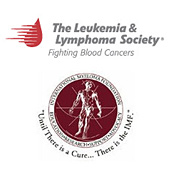

Benzene and Multiple Myeloma
Multiple myeloma is a cancer of the plasma cells. These cells cause destruction of bone, resulting in bone pain, hypercalcemia, compression, fractures, spinal cord compression, hemiparesis, and paraplegia. The disease is treatable, but essentially incurable. Virtually all patients with multiple myeloma succumb to their malignancy.
Multiple myeloma is a disease of old age. The median age at diagnosis is 72. Mortality rates have been rising since the 1950s. The increase in the incidence of multiple myeloma was among the highest for any cancer during this period. Approximately 12,000 new cases are diagnosed annually.
Several reviews of the epidemiology of multiple myeloma have been published. See, e.g., Riedel, D.A., “Epidemiologic Studies of Multiple Myeloma: Occupation and Radiation Effects,” in Obrams et al., eds.,Epidemiology and Biology of Multiple Myeloma (1991); Riedel, D.A., et al., “The Epidemiology of Multiple Myeloma,” in Neoplastic Diseases of the Blood (2d ed. 1991); Riedel, D.A., et al., “The Epidemiology of Multiple Myeloma,” Hematol. Oncol. Clin. N. Amer. 6(2):225-47 (1992); Riedel, D.A., et al., “Epidemiology of Multiple Myeloma,” in Schottenfeld et al., eds., “Cancer Epidemiology and Prevention (2nd ed. 1996); Pottern, L. M., et al., “Epidemiology of Multiple Myeloma,” in Wiernik et al., eds., Neoplastic Diseases of the Blood (3rd ed. 1996); Brown, L.M., et al., “Epidemiology of Multiple Myeloma,” in Wiernik et al., eds.,Neoplastic Diseases of the Blood (4th ed. 2003).
In general, causal associations for multiple myeloma have been reported in workers exposed to petrochemicals, especially those occupationally exposed to benzene, a known human carcinogen and leukemogen. In addition to chemical workers, elevated risks of multiple myeloma have been reported among farmers and others engaged in agricultural operations, metal workers, rubber manufacturing workers and painters. All of these occupations entail exposure to such benzene-containing products, i.e., gasoline or organic solvents. The epidemiologic literature shows that benzene is the chemical most strongly associated with multiple myeloma.
Many epidemiologic studies of benzene-exposed workers have been conducted and published. However, because of the rarity of multiple myeloma, few of the studies have had sufficient statistical power to detect statistically significant increases in multiple myeloma. Despite the limited sensitivity of epidemiologic studies of rare diseases as an analytic tool for the detection of causal associations, several of the studies of benzene-exposed workers have reported increased risks of multiple myeloma and some of the larger studies have found increased rates of multiple myeloma that achieve statistical significance.
The first cohort of benzene-exposed workers that was studied had an excess of multiple myeloma. In 1977 investigators at the National Institute of Occupational Safety and Health (NIOSH) published the results of their epidemiologic study of the “Pliofilm cohort,” a workforce that used benzene to make Pliofilm, a type of rubber. The researchers reported a statistically significant increase of leukemia in the exposed workers. Infante, P. F., et al., “Leukemia in Benzene Workers,” Lancet 11:76-78 (July 9, 1977). In a follow-up of this study published a decade later, the NIOSH researchers reported an increased rate of multiple myeloma in the same workforce. Rinsky, R. A. et al., “Benzene and Leukemia: An Epidemiologic Risk Assessment,” New Engl. J. Med. 316(17):1044-1050 (April 23, 1987). In this study, the overall standardized mortality ratio for multiple myeloma was 409 (95% CI 110 to 1047). This means that the risk of developing multiple myeloma was more than four times greater in the exposed workforce than in the general population. Further, because the lower bound of the 95% confidence interval was above 100, the probability that the four-fold increased risk was due to chance was less than 5%, i.e., the multiple myeloma excess was statistically significant.
In 1978, researchers at the National Cancer Institute and the National Institutes of Health published the results of a proportionate cancer mortality study of U.S. Government Printing Office workers exposed to benzene from solvents. Of 32 workers with hematologic malignancies, eight (25%) had multiple myeloma, resulting in a Proportionate Mortality Ratio of 2.19, which was statistically significant (95% CI 1.2 – 4.0). Greene, M. H., et al., “Cancer Mortality Among Printing Plant Workers,” Environ. Res. 20:66-73 (1979).
In 1981, researchers at Memorial Sloan-Kettering Cancer Center published the results of a prospective study of American petroleum industry employees from 19 oil companies. They found four cases of hematologic malignancy, three of which were multiple myeloma, yielding a Standardized Incidence Ration (SIR) of 552.03 – a greater than five-fold increase, which was statistically significant (p = .04). Schottenfeld, D., et al., “A Prospective Study of Morbidity and Mortality in Petroleum Industry Employees in the United States – A Preliminary Report,” Banbury Report No. 9: Quantification of Occupational Cancer pp. 247-260 (1981).
In 1983, researchers at the National Cancer Institute and the University of Arizona published the results of an historical mortality study of 259 male employees of a chemical plant where benzene had been used in large quantities. The only significant cause of excess mortality was of cancers of the hematopoietic system, and of the four hematopoietic cancers found, two (50%) were multiple myeloma, resulting in a Standardized Mortality Ratio of 870 – an almost nine-fold increase which was statistically significant. Decouflé, P. et al., “Mortality Among Chemical Workers Exposed to Benzene and Other Agents,” Environ. Res. 30:16-25 (1983).
In 1983, investigators at Harvard School of Public Health published the results of a mortality study of 29,087 employees of a rubber plant who were exposed to benzene as a rubber solvent. They found 42 deaths from hematologic malignancies, of which 10 (23.8%) had been diagnosed with multiple myeloma, resulting in a Standardized Mortality Ratio of 2.27 – a greater than two-fold increase, but which was not statistically significant. Delzell, E., et al., “Mortality Among Rubber Workers: III. Cause-Specific Mortality, 1940-1978,” J. Occup. Med. 23(10):677-684 (1983).
In 1987, investigators at Johns Hopkins School of Hygiene and Public Health and the National Cancer Institute published the results of a case-control study of multiple myeloma patients. They found a greater than three-fold increase in multiple myeloma among patients occupationally exposed to petroleum products, which was statistically significant (OR = 3.7, 95% CI = 1.3-10.3). Linet, M. S., et al., “A Case-Control Study of Multiple Myeloma in Whites: Chronic Antigenic Stimulation, Occupation, and Drug Use,” Cancer Research 47:2978-2981 (1987).
In 1989, Italian researchers reported the results of a case-control study of 332 cases of lymphopoietic malignancy in the Milan area, of which 110 were multiple myelomas. A significant trend in risk was observed between duration of exposure to benzene and other solvents and multiple myeloma. La Vecchia, C., et al., “Occupation and Lymphoid Neoplasms,” Brit. J. Cancer 60(3):385-388 (1989).
In 1990, researchers from New Zealand reported the results of a study in which they investigated the risk of cancer to painters based on a cancer registry. Of 25 hematologic malignancies among painters, 10 (40%) were multiple myelomas, yielding an almost two-fold increase which was statistically significant (OR = 1.95, 95% CI = 1.05-3.65). Bethwaite, P. B., et al., “Cancer Risks in Painters: Study Based on the New Zealand Cancer Registry,” Brit. J. Ind. Med. 47:742-746 (1990).
In 1991, Australian investigators published the results of a prospective cohort study of the Australian petroleum industry. They found an excess of all lymphohematopoietic cancers except Hodgkin’s disease. Of 26 such cases, 4 (15.4%) were multiple myeloma, yielding a greater than 2-fold increase, which was not statistically significant (SIR = 2.2, 95% CI = 0.6 – 5.6). Christie, D., et al., “A Prospective Study in the Australian Petroleum Industry: II. Incidence of Cancer,” Brit. J. Ind. Med. 48:511-514 (1991). In an update of this study, the Australian investigators found that six workers had died of multiple myeloma when 2.3 were expected, yielding a Standardized Mortality Ratio of 2.6 which was of borderline statistical significance. (95% CI = 1.0 – 5.7). Bisby, J. A., et al., Health Watch: The Australian Institute of Petroleum Health Surveillance Program: Ninth Report 1992 (Univ. of Melbourne 1993). In a further update of the cohort, the Australian researchers reported 11 cases of multiple myeloma whereas 4.6 were expected, yielding a Standardized Incidence Ratio of 2.4, which was statistically significant (95% CI = 1.2 – 4.3). Bisby, J. A., et al., “Update of Results from HEALTH WATCH* Ninth Report August 1995 (unpublished). In the most recent update of the cohort, the Australian investigators found 13 cases of multiple myeloma, whereas 6.8 were expected, yielding a Standardized Incidence Ration of 1.9, which was of borderline statistical significance (95% CI = 1.0 – 3.3). Bisby, J. A., et al., Health Watch: The Australian Institute of Petroleum Health Surveillance Program: Tenth Report 1998 (Univ. of Melbourne 1999).
In 1992, investigators from Denmark and the National Cancer Institute published the results of a large population-based case-control study to evaluate occupational exposures in 1,098 males diagnosed with multiple myeloma from 1970 to 1984. They reported increased risks among benzene-exposed workers, which did not achieve statistical significance. Heineman, E. F., et al., “Occupational Risk Factors for Multiple Myeloma Among Danish Men,” Cancer Causes Control 3:555-568 (1992).
In 1992, Exxon published the results of a retrospective mortality study of 39,597 of its oil industry employees. Among marketing and transportation workers, they found seven deaths from multiple myeloma whereas 3.9 were expected, yielding a Standardized Mortality Ratio of 1.81, which was not statistically significant. (95% CI = 0.73 – 3.73). Schnatter, A. R., et al., “A Retrospective Mortality Study within Operating Segments of a Petroleum Company,” Amer. J. Ind. Med. 22:209-229 (1992).
In 1997, Monsanto published the results of an updated cohort mortality study of 4,172 workers. They found a 2.3-fold increased risk of both leukemia and multiple myeloma for production workers, which was not statistically significant (95% CI = 0l7 – 5.3 and 0.7 -9.4). Ireland, B., et al., “Cancer Mortality Among Workers with Benzene Exposure,” Epidemiology 8:318-320 (1997). In a further update of this cohort, the investigators found a dose response relationship for multiple myeloma and cumulative exposure. For multiple myeloma, the Standardized Mortality Ratios were 1.1 (95% CI 0.3 – 2.5) in the non-exposed group, 1.4 (95% CI 0.2 to 5.1) in the < 1 ppm-years group, and 2.6 (95% CI 0.7 to 6.7 in the > 6 ppm-years group. However, when peak exposures over 100 ppm for 40 or more days were considered, the Standaridzed Mortality Ratio for multiple myeloma was increased four-fold (SMR = 4.0, 95% CI 0.8 to 11.7). Collins, J. J., et al., “Lymphohaematopoietic Cancer Mortality Among Workers with Benzene Exposure,” Occup. Environ. Med. 60:676-679 (2003).
In 1998, Swedish researchers published the results of a study of nested case-control study of lymphohematopoietic cancer in two cohorts of Swedish seamen. For each case, three to five age matched referents from the population were selected. Exposure was assessed from data in the Swedish Registry of Seamen and from a register of Swedish ships. They found that seamen in one of the cohorts, who had been exposed to cargo vapours for at least one month on chemical or product tankers, had an increased risk of lymphatic and haematopoietic malignancies (OR = 2.6, 95% CI = 1.1 to 5.9), with a statistically significant exposure-response relation (p = 0.04). The ORs were increased for both lymphoma (3.2), multiple myeloma (4.0), and leukaemia (1.6), but the increase was only significant for non-Hodgkin’s lymphoma (OR 3.3, 95% CI 1.1 to 10.6). Nilsson, R.I., et al., “Leukaemia, lymphoma, and multiple myeloma in seamen on tankers,” Occup Environ Med. 55(8):517-21 (1998).
In 2002, researchers at the University of Irvine in California reported the results of a case-control study for 607 cases of acute myeloid leukemia and 643 cases of multiple myeloma. A unique feature of this study was an analysis using a geographic information system (GIS) to correlate the incidence of these cancers with proximity to six dump sites that received large amounts of petroleum refinery waste. The investigators found that construction workers and resource extraction workers (petroleum drilling/recovery and mining workers) had a 2.8 fold increased risk of multiple myeloma, which was of borderline statistical significance (95% CI = 1.0 – 7.4) and that residence in proximity to each of the six petroleum refinery waste dump sites was associated with an excess multiple myeloma incidence. Speer, S. A., et al., “Risk Factors for Acute Myeloid Leukemia,” J. Environ. Health 64(7):9-16 (2002).
In 2003, researchers from Solutia investigated lymphohaematopoeitic cancer mortality among 4417 workers at a chemical plant by cumulative and peak benzene exposure. Thy found little evidence of increasing risk with increasing cumulative exposure for leukemia and lymphohaematopoeitic cancers with the exception of multiple myeloma. For multiple myeloma, the SMRs were 1.1 (95% CI = 0.3 to 2.5) in the non-exposed group, 1.4 (95% CI = 0.2 to 5.1) in the <1 ppm-years, 1.5 (95% CI = 0.2 to 5.4) in the 1-6 ppm-years, and 2.6 (95% CI= 0.7 to 6.7) in the >6 ppm-years group. When peak exposures over 100 ppm for 40 or more days were considered, the observed number of all leukaemias (SMR = 2.7, 95% CI 0.8 to 6.4), Acute Nonlymphocytic Leukemia (SMR = 4.1, 95% CI 0.5 to 14.9), and multiple myeloma (SMR = 4.0, 95% CI 0.8 to 11.7) were increased. Collins, J. J., et al., “Lymphohaematopoeitic cancer mortality among workers with benzene exposure,” Occup Environ Med. 60(9):676-679 (2003).
In 2005, Japanese researchers reported the results of a case-control study of occupational factors for multiple myeloma in Japan. Data for 57 cases and 57 controls were obtained from Sapporo Medical University Hospital and its affiliated hospitals in Hokkaido. Controls were matched to each case by gender, age, and hospital. Detailed information regarding several factors possibly related to MM was obtained by interviews in hospitals. Odds ratios (ORs) and 95% confidence intervals (95% CIs) were calculated with adjustment for cigarette smoking as confounding factor. A statistically significant 8-fold increased risk of multiple myeloma was found for occupational exposure to chemical products including organic solvents or petroleum (OR = 8.05, 95% CI = 1.01-64.45). Sonoda T, et al., “A case-control study of multiple myeloma in Japan: association with occupational factors,” Asian Pac J Cancer Prev. 6(1):33-36 (2005).
In 2006, Australian researchers reported the results of a study investigating genetic variations in benzene metabolism and multiple myeloma. They conducted a case-control study of 102 multiple myeloma patients and 205 controls, showing a statistically significant trend in increasing risk of multiple myeloma with inheritance of multiple putative ‘high risk’ genetic variants in related pathways of benzene detoxification. Individuals who carried polymorphisms for GSTT1 null and/or high activity microsomal epoxide hydrolase (mEH 113YY+139HR or 113YY+139RR or 113YH+139RR) and/or low activity NAD(P)H:quinone oxidoreductase 1 (NQO1 187PS/SS) were 1.65, 2.49 and 13 times more likely to have multiple myeloma (ptrend = 0.001). Lincz, L. F., et al., Leuk Res. [Epub ahead of print] (August 30, 2006).
These studies provide adequate epidemiologic support to conclude that a causal relationship does exist for occupational exposure to benzene and the development of multiple myeloma. Despite all this evidence, the petroleum industry disputes this causal relationship, based primarily upon a review by Bergsagel and others published in the journal Blood in 1997. This review concluded that the data did not support a causal association between benzene exposure and multiple myeloma. However, this publication was not actually a review — a special type of article that must present a neutral and unbiased view of the existing literature. In fact, the genesis of the publication was litigation. Several of the authors were experts for the defense in a case in which it was claimed that the plaintiff’s multiple myeloma was caused by occupational exposure to benzene. These authors prepared a joint report in the litigation arguing that benzene was not a cause of multiple myeloma. At the request of the defense attorney, they then turned the litigation piece into a “review article” for publication. In submitting the article to journals for publication, the authors did not disclose their bias or funding. The journal Blood published the “review” without knowledge of its provenance.



